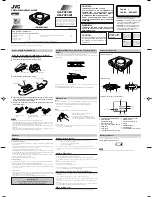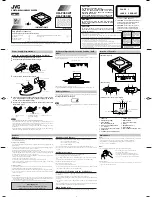
MP3 CDs contain sound recordings. They can be played in the
normal manner on an audio system. The digital signals transmitted
during MP3 playback are PCM encoded, regardless of the audio
output setting. The signals are output with the same data rate as
the music source (possibilities are: 32 kbps –320 kbps, ideal: 128
kbps).
MP3 files can be organised into folders and subfolders similar to
files on a computer.
JPEG CDs
JPEG stands for Joint Picture Experts Group. This process was de-
signed to compress picture files.
JPEG files can be burned onto a CD along with other file types.
These CDs are known as file CDs or mixed-mode CDs. For exam-
ple, the CD could contain MP3 files (audio) and JPEG files (for ex-
ample to display album covers).
The files on a JPEG CD can be organised in directories. This struc-
ture is similar to that of an MP3 CD.
JPEG CDs only contain data in the compressed JPEG format. This
is mostly data from digital cameras or from imaging programs. The
data (images) can be displayed individually or in sequence in a
slide show.
KODAK Picture CDs
This method was developed for archiving analogue photographs.
After they are developed, small photographs are scanned with a
resolution of 1536 x 1024 pixels and burnt onto a CD in JPEG for-
mat.
A KODAK picture CD can contain up to 40 pictures. In addition to
the picture files, a KODAK picture CD can also contain imaging
software which enables the user to play the CD on a PC, edit the
pictures or view a slide show.
Audio CDs
An audio CD is identified by this logo.
Audio CDs only contain sound recordings. They can be played in
the normal manner on an audio system.
The individual tracks are stored in a sequence. There are no folders.
PLAYING AUDIO/VIDEO FILES
_______________________
29
EN
GLISH
















































